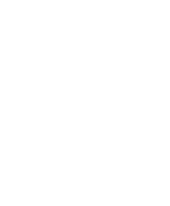 |
 |
 |

|
René Lalique, Sirènes et grenouilles decanter, 1911, Fougères vase, 1912 and Quatre masques vase, 1911, private collection
©Photomaterial Credit: Gemeentemuseum Den Haag
|
|
 |
RENÉ LALIQUE (1860 – 1945)
-Master of French Art Nouveau and Art Deco
The exclusive objects produced by the renowned French jewellery designer and glass artist René Lalique are iconic symbols of luxury from the Art Nouveau and Art Deco periods. Lalique’s work still attracts worldwide interest and vertiginous sums are paid for pieces at auction. This summer, the Gemeentemuseum Den Haag hosts a dazzling display of work by this celebrated artist. René Lalique (1860 – 1945) – Master of French Art Nouveau and Art Deco is the Netherlands’ first ever major exhibition of his work. His rich and varied oeuvre will form the basis for a detailed discussion of the artist’s Dutch clientele, sources of commissions in the Netherlands, and the reception of his work in this country.
|

|
Posted 11 May 2013
|
Share this:
|
|
|
|
|
|
|
|
|
|
René Lalique (1860 – 1945) -Master of French Art Nouveau and Art Deco
Gemeentemuseum Den Haag
22/6-10/11
The exclusive objects produced by the renowned French jewellery designer and glass artist René Lalique are iconic symbols of luxury from the Art Nouveau and Art Deco periods. Lalique’s work still attracts worldwide interest and vertiginous sums are paid for pieces at auction. This summer, the Gemeentemuseum Den Haag hosts a dazzling display of work by this celebrated artist. René Lalique (1860 – 1945) – Master of French Art Nouveau and Art Deco is the Netherlands’ first ever major exhibition of his work. His rich and varied oeuvre will form the basis for a detailed discussion of the artist’s Dutch clientele, sources of commissions in the Netherlands, and the reception of his work in this country.
In the period around 1900, young artist René Lalique was internationally recognised as the foremost designer of art nouveau jewellery. Pieces by him were flaunted not just by opera stars and actresses, but by the great and the good. Their appeal lay not in the use of gold and diamonds, but in their creative styling and the use of new materials like plique-à-jour enamel and semi-precious stones. Lalique favours typical Art Nouveau and Art Deco motifs, often derived from nature or from the female physique. In addition, he became noted as a glass artist, an aspect of his work that also attracted interest in the Netherlands. Lalique’s partnership with the top end of the French perfume industry brought rapid changes in his oeuvre. He developed an approach mid-way between art and industrial design to produce items best described as luxury modern industrial design articles: high-quality machine-made art objects with an air of luxury. As well as designing bottles for perfume manufacturers, he soon started to sell mass-produced – and therefore affordable – decorative glass under his own label.
Dutch consumers first became familiar with Lalique in the ‘roaring twenties’. Lalique glass came to be retailed not just by renowned city stores like Metz & Co. and Focker en Meltzer, but also via small exhibitions throughout the Netherlands. His work was popular as far away as the Dutch East Indies, Dutch companies commissioned pieces and even the royal family succumbed to its French elegance and charm: Lalique was asked to design lighting fixtures for Soestdijk palace.
The Gemeentemuseum Den Haag’s wonderful 1930s building is a uniquely perfect setting for an exhibition devoted to this master of the French Art Nouveau and Art Deco period. The hundred objects on display will convey a clear impression of inter-war French chic in the Netherlands – from a pearl-studded horn comb to a plique-à-jour enamel necklace, from gold cufflinks to mould-blown perfume bottles and dazzlingly decorative glass vases that created an aura of high-class prestige around members of turn-of-the-century Dutch society.
This exhibition and the accompanying, lavishly illustrated catalogue of the oeuvre of René Lalique represent the culmination of a four-year doctoral study undertaken at the University of Leiden by researcher Lennart Booij (b. 1970). Booij is well-known as the presenter of several Dutch TV programmes.
When published, the book has a review in >book
GEMEENTEMUSEUM DEN HAAG
Stadhouderslaan 41
2517 HV Den Haag
www.gemeentemuseum.nl
|
|
|

|

|

|

|

|
|
|
René Lalique, glass coupe, 1914, collection Gemeentemuseum Den Haag
©Credit: Gemeentemuseum Den Haag
|
|
|
|
|
René Lalique, parfume bottles: Quatre cigales, 1910, Narkiss, 1912, Styx, 1911, Ambre antique, 1910 and A côtes bouchon papillons, 1911, private collection
©Credit: Gemeentemuseum Den Haag
|
|
|
|
|
René Lalique, Courges vase, 1914 and small Églantines vase, 1921, private collection and collection National Glass Museum Leerdam
©Credit: Gemeentemuseum Den Haag
|
|

|

|

|

|

|
|
|
René Lalique, Bacchantes vase, 1927, private collection
©Credit: Gemeentemuseum Den Haag
|
|
|
|
|
René Lalique, lids and stoppers with patinas of various colours, private collection
©Credit: Gemeentemuseum Den Haag
|
|
|
|
|
René Lalique, red celluloid Cérises box, 1923 and Suzanne Lalique, glass Pavot and Lotus beakers, 1922, private collection and collection National Glass Museum Leerdam
©Credit: Gemeentemuseum Den Haag
|
|
|
|
|
|


